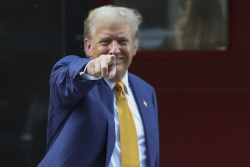
The big potential of AI to reshape the longer term has seen huge funding from trade in recent times. However the rising affect of personal firms within the primary analysis that’s powering this rising expertise may have critical implications for the way it develops, say researchers.
The query of whether or not machines may replicate the form of intelligence seen in animals and people is sort of as previous as the sphere of laptop science itself. Trade’s engagement with this line of analysis has fluctuated over the a long time, leading to a collection of AI winters as funding has flowed in after which again out once more because the expertise has didn’t dwell as much as expectations.
The arrival of deep studying on the flip of the earlier decade, nevertheless, has resulted in probably the most sustained runs of curiosity and funding from personal firms. That is now starting to yield some really game-changing AI merchandise, however a new evaluation in Science exhibits that it’s additionally resulting in trade taking an increasingly dominant place in AI analysis.
It is a doubled-edged sword, say the authors. Trade brings with it cash, computing sources, and huge quantities of information which have turbo-charged progress, however it’s also refocusing your complete subject on areas which can be of curiosity to non-public firms relatively than these with the best potential or profit to humanity.
“Trade’s industrial motives push them to give attention to subjects which can be profit-oriented. Typically such incentives yield outcomes according to the general public curiosity, however not all the time,” the authors write. “Though these trade investments will profit shoppers, the accompanying analysis dominance needs to be a fear for policy-makers all over the world as a result of it signifies that public curiosity options for essential AI instruments might change into more and more scarce.”
The authors present that trade’s footprint in AI analysis has elevated dramatically in recent times. In 2000, solely 22 % of shows at main AI conferences featured a number of co-authors from personal firms, however by 2020 that had hit 38 %. However the influence is most clearly felt on the slicing fringe of the sphere.
Progress in deep studying has to a big extent been pushed by the event of ever bigger fashions. In 2010, trade accounted for under 11 % of the largest AI fashions, however by 2021 that had hit 96 %. This has coincided with rising dominance on key benchmarks in areas like picture recognition and language modeling, the place trade involvement within the main mannequin has grown from 62 % in 2017 to 91 % in 2020.
A key driver of this shift is the a lot bigger investments the personal sector is ready to make in comparison with public our bodies. Excluding protection spending, the US authorities allotted $1.5 billion for spending on AI in 2021, in comparison with the $340 billion spent by trade all over the world that yr.
That additional funding interprets to much better sources—each when it comes to computing energy and knowledge entry—and the power to draw the most effective expertise. The dimensions of AI fashions is strongly correlated with the quantity of information and computing sources obtainable, and in 2021 trade fashions had been 29 instances bigger than educational ones on common.
And whereas in 2004 solely 21 % of laptop science PhDs that had specialised in AI went into trade, by 2020 that had jumped to virtually 70 %. The speed at which AI consultants have been employed away from college by personal firms has additionally elevated eight-fold since 2006.
The authors level to OpenAI as a marker of the growing toughy of doing cutting-edge AI analysis with out the monetary sources of the personal sector. In 2019, the group remodeled from a non-profit to a “capped for-profit group” so as to “quickly enhance our investments in compute and expertise,” the corporate mentioned on the time.
This additional funding has had its perks, the authors be aware. It’s helped to deliver AI expertise out of the lab and into on a regular basis merchandise that may enhance individuals’s lives. It’s additionally led to the event of a bunch of invaluable instruments utilized by trade and academia alike, equivalent to software program packages like TensorFlow and PyTorch and more and more highly effective laptop chips tailor-made to AI workloads.
Nevertheless it’s additionally pushing AI analysis to give attention to areas with potential industrial advantages for its sponsors, and simply as importantly, data-hungry and computationally-expensive AI approaches that dovetail properly with the form of issues massive expertise firms are already good at. As trade more and more units the path of AI analysis, this might result in the neglect of competing approaches in the direction of AI and different socially useful purposes with no clear revenue motive.
“Given how broadly AI instruments may very well be utilized throughout society, such a scenario would hand a small variety of expertise companies an unlimited quantity of energy over the path of society,” the authors be aware.
There are fashions for the way the hole between the personal and public sector may very well be closed, say the authors. The US has proposed the creation of a Nationwide AI Analysis Useful resource made up of public analysis cloud and public datasets. China lately authorized a “nationwide computing energy community system.” And Canada’s Superior Analysis Computing platform has been working for nearly a decade.
However with out intervention from policymakers, the authors say that teachers will possible be unable to correctly interpret and critique trade fashions or supply public curiosity options. Making certain they’ve the capabilities to proceed to form the frontier of AI analysis needs to be a key precedence for governments all over the world.
Picture Credit score: DeepMind / Unsplash




